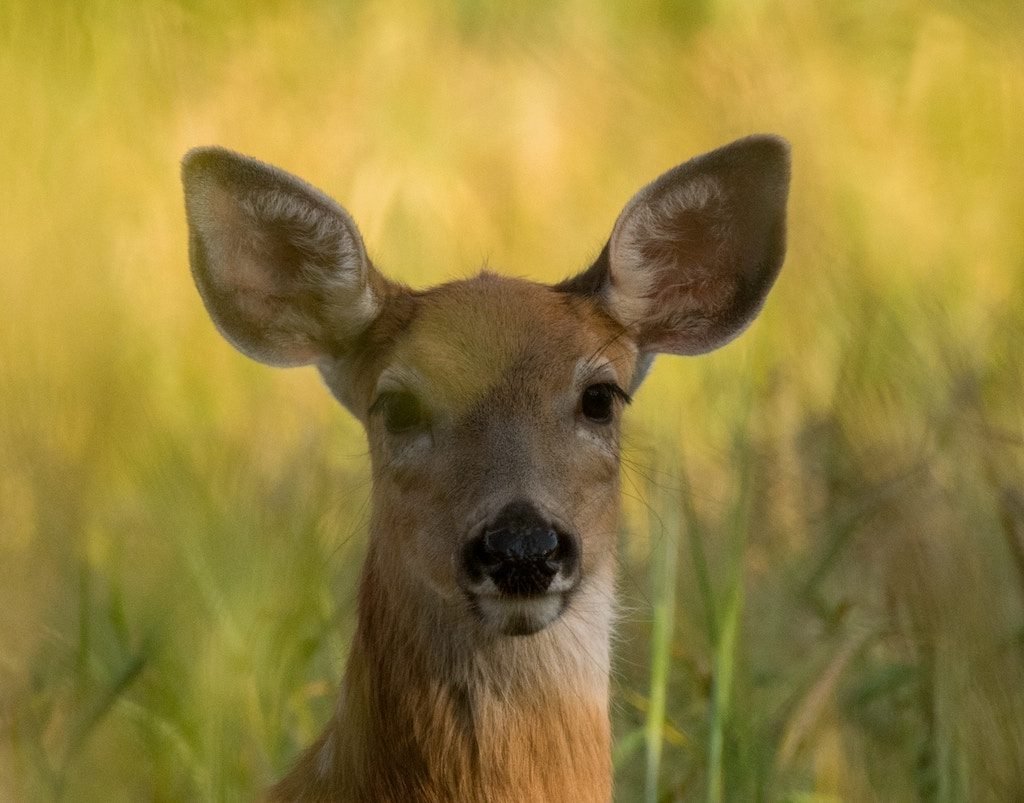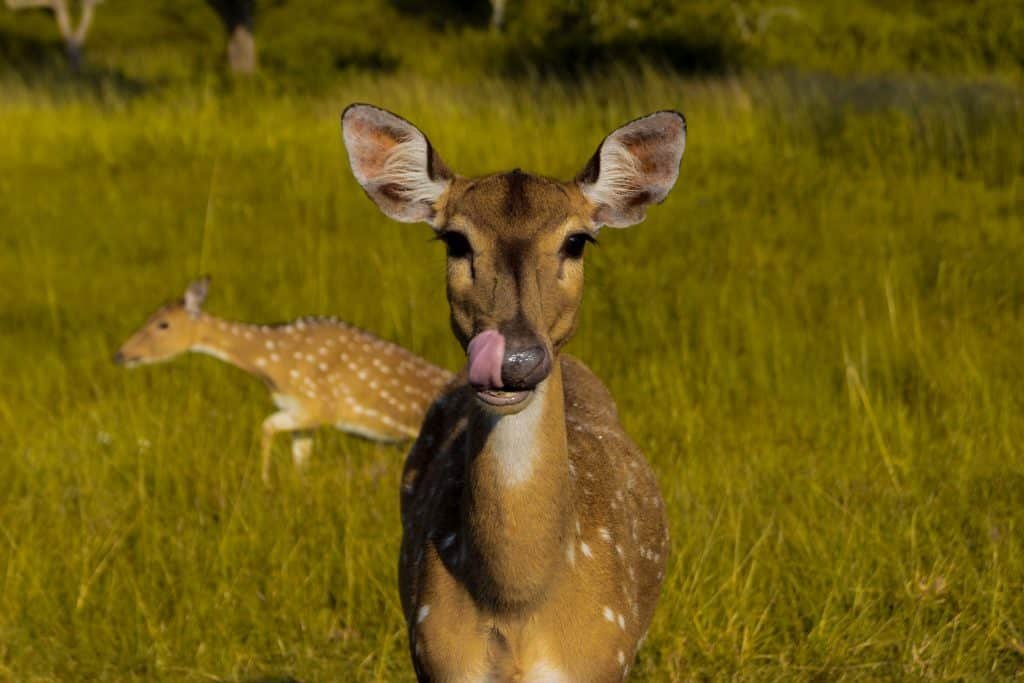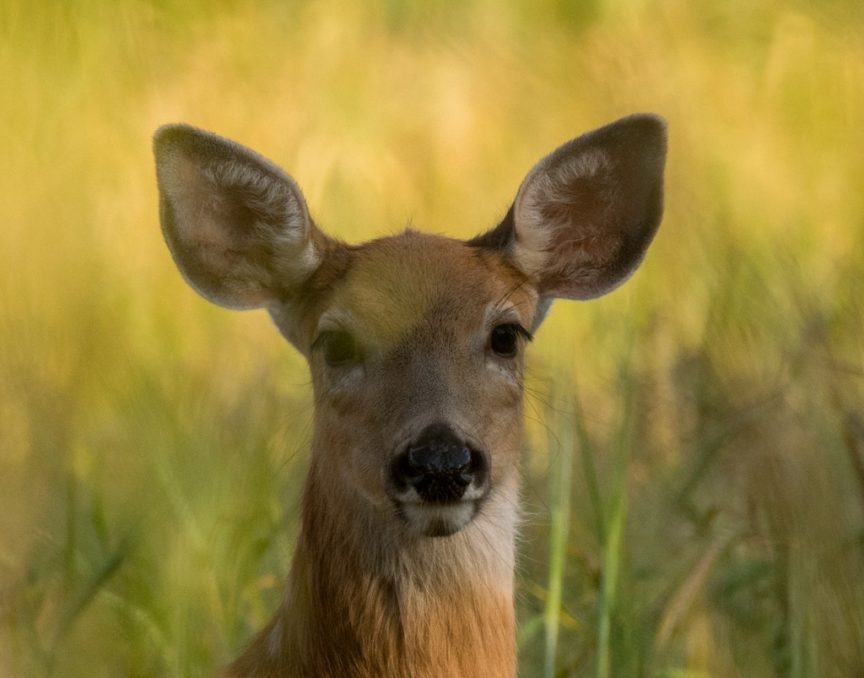Staying hidden is one of the biggest priorities of a hunter. Those
So… what colors can deer see?
More importantly, what colors can deer see? Deer perceive colors differently from humans. A study conducted in 1992 found out that deer are actually red-green color blind. Without delving too much into the technicalities of nano meters, rods, and cones, it basically means that they can differentiate red from blue, but not from green or orange. It’s not true that they only see in black and white. They still see in color, it’s just that they have difficulty perceiving colors at the end of the spectrum with the longer wavelength, like the red and orange. Their eyes are only sensitive to colors with
How deer see vs. humans

To elaborate, humans have a trichromatic vision. We have three different types of cone photopigments or specialized photoreceptor cells in our eyes that enables us to perceive color from different parts of the spectrum, may it be short wavelength light (blue), middle wavelength light (green), or long wavelength light (red). But with deer, this isn’t the case. They only have two cone photopigments, what they lack is the one susceptible to long wavelength light. This is why they have difficulty perceiving reds and oranges. With regards to their receptivity to ultraviolet light, this could be attributed to the fact that unlike humans, they do not have a UV filter which blocks 99% of harmful UV from entering our eyes. Without it, our retinas would be damaged by the UV light. It also helps us see things in finer details. Since deer does not have this filter, they can’t see things with much clarity but they can perceive movement much better.
What NOT to wear/use:
So if you want to have more chances of getting your trophy buck, try and stay away from wearing anything blue or using UV brightening fabric cleaners. However, if you’re out there thinking wearing a blaze orange outfit is all it will take to get you your kill, then you’re wrong. Deer aren’t dubbed as an anti-predation machine for no reason. If anything, their eyes are just an added layer to their innate security system. It’s not all there is to it. They may be colorblind but their killer instincts and practical biological makeup definitely make up for what they’re lacking. Needless to say, they’re not easy kill. If you want this hunting season to be a success, it’s important that you go out there knowing exactly what you’re up against.
Deer Security System

Deer have various capabilities that make them well-equipped to detect even the most experienced hunters.
First, their nighttime vision. Deer are more active during the wee hours of the night. In order to survive, their eyes must be more adapted to seeing things in low light. Retinas of mammals have two light sensitive cells called cones or daytime cells and rods or nighttime cells. Cones are responsible for perceiving light and color. On the other hand, rods function in the absence of the light and can only perceive things that are black and white. A deer’s eye has more rods in it than cones, enabling them to see better during nighttime but poorer in daytime. This also limits their capability of seeing colors. They also have a tape-tum at the back of their eye. A tape-tum is a reflective layer that helps their receptor cells bounce the light that they failed to absorb back across the cells, making it possible for them to use the same light twice. Another reason why they can see better when it’s dark is because their pupils are much more wide-set than ours, allowing them to gather more light in lowlight situations.
Next is their wide field of view. Since their eyes are set wider apart from each other, their peripheral vision is also much higher than humans. Deer have a peripheral vision that ranges from 250 to 270 degrees while human only goes from 160 to 170 degrees. This gives them the ability to pick up the slightest predator movement from their surroundings as long as it’s just below the horizon. So if you want to stay undetected, you’re better off above the ground than on it.
Let’s not forget their impeccable sense of smell. They possess no less than 297 million olfactory receptors on their nose while humans only have 5 million. In addition, they also have another scent gland located in their mouth called the vomeronasal organ. To further illustrate their capabilities, let’s compare them to a dog. A dog has only 220 million olfactory receptors on their noses and they can already do pretty great things such as: identifying very small traces of chemicals, detect fear, anxiety or other emotions through smelling the pheromones emitted from a person’s glands, even pick up a human scent from a crime scene that’s a week old! Considering the fact that a deer’s olfactory system is 30% more receptive than that of a dog’s, imagine how much stronger their sense of smell actually is. That’s why when hunting, it’s important to make sure that you don’t smell at all. Not only that, you also have to make sure that your stand is free from your odor since they would also be able to pick up your scent from, say the tree that you’re always on.
Lastly, a deer’s ears are capable of detecting ultra-high-frequency sounds. Human ears can only detect up to 20,000 hertz while deer’s ears can hear frequencies that go from 30,000 hertz and beyond. Their ears are also built in a way that makes it easier to locate a nearby predator. Like tiny satellite dishes, they could rotate their ears towards the origin of the sound. On top of that, they’re also smart enough to distinguish sounds indicating a threat to sounds that doesn’t. They already know what a hunter’s footstep sounds like. To throw them off, try and change the rhythm of your walking. If you feel like they’re noticed you already, stop making any sound or movement for a while.
How to Defeat the Security System
With all that being said, it’s not entirely impossible to outsmart a deer. After all, countless hunters have been doing it for years. Below are a few tips and tricks on how to do just that:
- Sight
When it comes to their sense of sight, you already know its weaknesses: they can’t see well above the horizon; they have horrible visual acuity; and, of course, the color orange. So, aside from dawning blaze orange camos, the best way to remain unsighted is staying on top of trees or investing on a ground blind. A ground blind is a tent that’s designed to blend well with your hunting ground. This could give you the stealth that you need without taking away the advantages of being on ground. However, remember that when you’re using a ground blind, you have to be more mindful of your movements since deer are good at detecting movements on ground. If you must move, make sure to time your movements when the deer is looking away from your direction.
- Sound
As stated earlier, a deer’s ear can rotate towards the direction of a certain movement. So if your quarry has its ears on your direction, it’s over. You’ve been spotted. Your mission is to prevent that from happening. Be more apprehensive of you’re the sounds that you, your gears, or your weapons could be making. If you must make a sound, make sure that you make it when their ears are turned away from you. Avoid gears with metal pieces on it. Since deer are extra sensitive to high frequency sounds, metals clinking against each other might as well be a glaring alarm that screams danger.
- Smell
This might be the biggest challenge yet. Just sniffing off your clothes for any significant odor isn’t going to cut it since a deer’s nose is a hundred times more sensitive. A subtle fragrance might already be a red flag to them. Before going on your stand, make sure that you washed your gear and yourself with an odor-free soap. You can also try some scent eliminating spray or olfactory jamming spray available on the market. Another option is using an ozone machine inside your ground blind to cover and neutralize any of your scent.
A deer might be equipped with state-of-the-art senses. But so are you! A smart hunter is always at an advantage. At the end of the day, it’s not your gear or your blaze orange camo that would fill your tags. It’s your own skills and competency as a hunter. In the woods, you need to use your own head. Your wit and ingenuity would save you. It’s up to you to come up with various techniques and strategies to fill that freezer, or take that next tropy buck!
While you are here, you may want to check out:
- 5 Best Places To Hang A Tree Stand
- Meet Greg, the Author of Proper Hunting
- Best skinning knives of the year!

